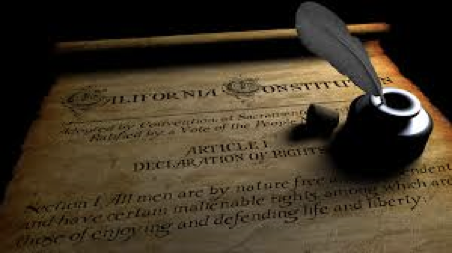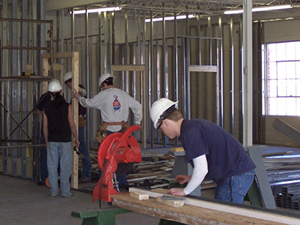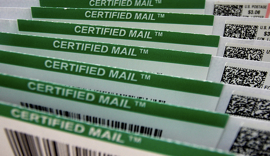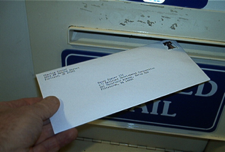Verification matters and here's why...
Learn moreCalifornia Mechanic’s Liens & Notices
Your Guide to California Preliminary Notices in 2020
COMMERCIAL:
- Upfront Notice:
- Preliminary 20-Day Notice:
- Required to be sent within 20 days of first delivery to the owner, general contractor, and lender.
- If sent later than 20 days, it only covers work done 20 days prior to mailing the notice.
- Preliminary 20-Day Notice:
- Follow-up Notice (if not paid):
- There is no statutory follow-up notice.
RESIDENTIAL:
- Same handlings as for Commercial jobs.
PUBLIC:
- Same handlings as for Commercial jobs.
Relevant Documents and pdfs for California Preliminary 20 Day notice for Private and Public works:
- Mechanic’s Lien form
- Release of Mechanics’ Lien form
- Partial Release of Mechanics’ Lien form
- California Preliminary Notice Form – 2019
Need help? Give us a call (800) 722-2422 or Contact us!
 California Mechanics Lien Law
California Mechanics Lien Law
What is a Mechanics Lien?
A contractor’s constitutional right to get paid!
History Of Revisions
- 1872 – First Codes
- 1951 – First Minor Revision
- 1969 – Second Minor Revision
- 2012 – Major Revision
- Substantive changes
- Renumbering
- Civil Code §§3082-3267 to Civil Code §§8000-8840 and Civil Code §§9000-9566
New Terminology
Statutory Implementation
- Persons Entitled To Lien: Civil Code §8400
- Material suppliers
- Direct contractors
- Subcontractors
- Lessors of equipment
- Design Professionals (architect, landscape architect, professional engineers, land surveyor: Civil Code §8400).
- Laborers
In General:
Anyone who furnishes labor, service, equipment or material (L.S.E.M.) for use in and which is used in a work of improvement
Claims for Fringe Trust Fund Benefits: Betancourt v. Storke Housing Investors (2003) 31 Cal.4th 1157
Persons NOT Entitled To Liens:
- Unlicensed contractors or subcontractors: B&P Code §7031
- Material supplier to material supplier
- A contractor providing “preconstruction services” for a project that was never built. D’Orsay International Partners v. Superior Court, 123 Cal.App.4th 836 (2004)
 Preliminary Notice
Preliminary Notice
- Puts The Owner And Lenders On Notice Of Your Potential Claim
- Use To Protect The Subcontractor’s Rights To Get Payment For Money Owed
REMINDER: Lender MUST be served with preliminary notice!
Who MUST Serve A Preliminary Notice?
- Subcontractor
- Material Supplier
- Equipment Lessor
- Design Professional
- Direct Contractor (with the lender only)
Who must be served?
- 1st tier sub – Notice to:
- 1. Owner
- 2. Direct Contractor
- 3. Lender
- 2nd tier sub/material supplier – Notice to:
- Owner
- Direct Contractor
- Lender
- Material supplier –
Notice to:- Owner
- Lender
- Director Contractor
- Owner/builder job:
- 1st tier sub is a direct contractor and must give notice to lender.
- 2nd tier sub/material supplier:
Notice to:- Owner/Builder
- Direct Contractor
- Lender
- Material supplier:
Notice to:- Owner/Builder
- Direct Contractor
- Lender
 How Notices Are Served:
How Notices Are Served:- Notice shall be in writing
- Notice shall be given by
- Personal Delivery
- Mail per (Civil Code 8110)
- Leaving the Notice & mailing a copy: Civil Code 8106
Notice given by mail shall be given by:
A) Registered mail
B) Certified Mail
C) Express Mail
D) Overnight Delivery by an express service carrier: Civil Code 8110
If notice given by mail, it is complete when deposited in the mail: Civil Code 8116(b)
5. Proof of notice shall be by a proof of service declaration that states:
- Description of the notice
- Date, place and manner of service
- Name and address of person to whom notice was given and if appropriate, the title or capacity in which the person was given notice
 D If by mail, accompanied by:
D If by mail, accompanied by:
Documentation provided by the United States Postal Service showing that payment was made to mail the notice using registered, certified or express mail
A return receipt, delivery confirmation, signature confirmation, or other proof of delivery or attempted delivery provided by the United States Postal Service showing the date of delivery and to whom delivered, or in the event of non-delivery by the returned envelope.
Documentation provided by an express mail service showing that payment was made to send the notice using an overnight delivery service. Civil Code 8118
Finding The Lender
- Building Permits
- Must include space for name, branch designation, if any, and address of construction lender
- Contract
- Property Owner
- NOTE: Reasonable Effort To Locate
A Lender Is Still Necessary
Required Information In Contract
- Civil Code §8170
- Direct Contractor and Owner
- Owner’s name, address, and place of business
- Name and address of construction lender
- Exception: Home Improvement Contracts
- Direct Contractor-Subcontractor And Subcontractor-Sub-Subcontractor
- Name address of owner, direct contractor and construction lender
Labor And Services
- General Description Of Labor And Services
- Known at the time
- Scope increase will be reflected in the Mechanic’s Lien
- Separate Contracts + Same Project = Separate Preliminary Notices
Estimate For Total Price
Figure Must Be Based On A Rational Analysis
- Not expected to be exact or precise
- Requires more than a guess
Change Orders
- No psychic powers required
- Changes in scope (and price) will be reflected in the Mechanic’s Lien
Rental Equipment, Inc. v. McDaniel Builders, Inc. (2001) 91 Cal. App. 4th 445: Preliminary Notice estimates (2) totaled $20,000.00; lien amount: $159,898.00.
“Estimate” means an approximate computation of the probable cost of a piece of work made by a person undertaking to do the work; Statute requires “a derived figure, arrived at by rational analysis”; “The estimate called for can be in compliance with the statute even though it badly misses the mark with reference to the total charges as finally tallied.” Can’t be a “guess, conjecture, or surmise.”
When To Serve Preliminary Notice?
Within 20 days of starting work – Proof of Notice Declaration
- Example: 20 Days
- Started work on March 1
- Give Notice on March 20
- Entitled to file a lien for work from March 1st forward
- Started work on March 1
If you’re working in the construction industry, then preliminary notice requirements are something you should pay attention to. In California, they changed in July of 2012, so you need to find actual information about them.
In this state, in order to retain the ability to file a valid mechanics lien, you need to send a preliminary notice. Property owners, general contractors, and lenders are usually the ones receiving it. They use it to paint a clear picture of the parties that are working on the project.
Preliminary notices have a deadline in California, but the state is strict in the required content.
The state allows you to file a mechanics lien on a project if you provide labor or materials to it. In some cases, the law specifies that some parties must send preliminary notice to rightfully preserve the mechanics lien.
California’s requirements for preliminary notice are not very different from those of other states. Their role is to inform a property owner about a claimant’s right to file a mechanics lien against the property in case there is no payment. A preliminary notice in California is meant to benefit the general contractor, property owner and top project members.
What Does a Preliminary Notice Include in California?
In the state of California, certain things should be included in preliminary notices, as the law requires them. They are:
- The name and address of the construction lender where necessary
- The owner’s name and address
- The prime contractor’s name and address
- The name and address of the party that contracted with the claimant
- The claimant’s name and address
- A general statement of the provided work
- A description of the site that is enough for identification (like a street address)
- A specific boldface type 235-word statement
- An estimate of the total price of the future provided work
When Should It Be Sent?
A preliminary notice should be sent within 20 days of the first material or labor furnishing.
Therefore, in case you send it after 20 days, you should know that it only protects lien rights for the previous 20 days.
How Do You Send It?
Preliminary notices can be sent via overnight delivery, express mail or registered mail. Make sure you have proof about mailing your notice.
The “certified mail” of the United States Postal Service is the most cost-effective way, as it costs under $5 and you receive a tracking number as well.
California has very good laws when it comes to preliminary notices. However, make sure you do your research before you send one.


